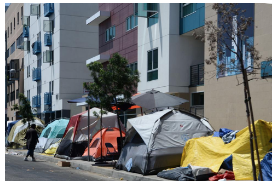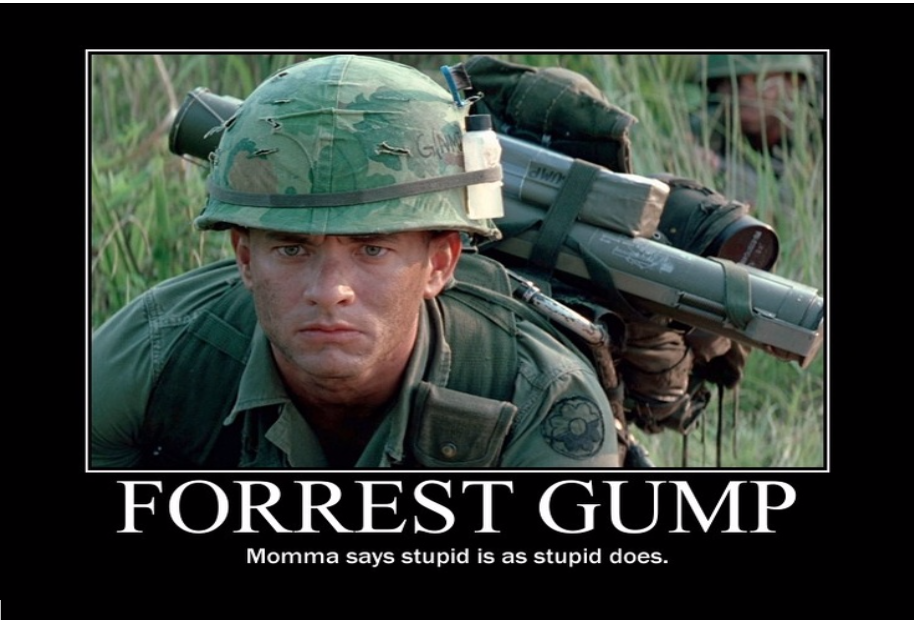CommentsPlatkin on Planning: WIMBY stands for “Wall Street in My Backyard.” In Los Angeles journalist Jill Stewart and former Los Angeles LA County Supervisor and City Councilmember, Zev Yaroslavsky, have popularized this term.
In a word, WIMBYs are the dedicated foot soldiers of the real estate sector. They not only repeat their talking points, but also wrap them in a thin veneer of focus-group tested buzzwords about housing, transportation, and climate change. The WIMBYs are their street fighters, traveling across town to other people’s backyards, to convince Neighborhood Councils and decision makers to support real estate projects requiring City Hall’s discretionary approvals.
They present themselves as the foils of “NIMBYs” (Not in my backyard), an epithet invented by their real estate industry patrons to deflect criticisms away from their projects. Instead of honestly responding to legitimate critiques, the WIMBY’s prefer to smear their opponents. Sometimes, they even doxx (publicly post personal information) them.
Where the WIMBYs came from: Like most cities, Los Angeles has a long history of collusion between city government and the real estate industry. One of the best analysts of this cozy relationship is former UCSB sociologist, Harvey Molotch, who coined the term urban growth machine to describe these co-conspirators and their political strategies. According to Professor Molotch, the classic growth machine included institutional investors (hence Wall Street), local Democratic Party officials (e.g., Antonio Villaraigosa, Eric Garcetti), contractors, lenders, construction unions, academics, journalists, and municipal boosters, such as Chambers of Commerce.
The niche job of the academics and journalists has been to substitute off-putting economic terms like real estate speculation, high rates of profit, rent gouging, and capitalist accumulation with upbeat euphemisms. Hence, they sprinkled their reports and articles with references to risk taking, expansion and growth, and development. They also contrived two trickle-down arguments to persuade the public that the good fortune of the rich lifted up everyone else. Their references to “supply and demand” and “filtering” portrayed real estate speculation as a sum-sum game. This was in lieu of the zero-sum worldview that has become undeniable in a Los Angeles where homeless encampments spring up like mushrooms after a rain in the shadow of new, pricey apartment complexes.
 The urban growth machine’s heyday was post WW-II America, when it comfortably relied on Federal urban renewal and interstate highway programs. Using the power of eminent domain, cities and state governments then acquired privately owned land that was centrally located and “blighted.” These parcels were soon recycled as new office buildings, high-rise apartments, hotels, banks, sports stadiums, and freeways, such as Bunker Hill and Chavez Ravine in Los Angeles. The urban growth machine immensely profited.
The urban growth machine’s heyday was post WW-II America, when it comfortably relied on Federal urban renewal and interstate highway programs. Using the power of eminent domain, cities and state governments then acquired privately owned land that was centrally located and “blighted.” These parcels were soon recycled as new office buildings, high-rise apartments, hotels, banks, sports stadiums, and freeways, such as Bunker Hill and Chavez Ravine in Los Angeles. The urban growth machine immensely profited.
But few of these government programs remain. Their demise was a consequence of soaring budget deficits, unprecedented bank bailouts, and massive military expenditures for the failed invasions and occupations of Vietnam, Laos, Cambodia, Afghanistan, and Iraq.
These missing public subsidies were gradually replaced with tax credits and cuts for the rich, public-private partnerships, privatization, and deregulation, all supported by the closely linked ideologies of neo-liberalism and market fundamentalism.
According to planning journalist, Zelda Bronstein, this market approach to urban real estate intensified with the ascendancy of the high tech industries in Silicon Valley. Some of these new billionaires funded an AstroTurf lobbying group, YIMBY California, closely allied with its Los Angeles partner, Abundant Housing.
While the YIMBY’s – who we call WIMBY’s -- subscribe to the broad tenets of the classic urban growth machine, they have put its old wine into new bottles. They are not public sector interventionists, but market fundamentalists. They maintain that when real estate investors are free to invest wherever high profits lure them, cities will thrive. Subways and busses will miraculously fill with passengers. Rents will fall in the face of a residential building boom, and climate change will be reversed by transit-oriented development.
To reach this make-believe utopia, they want to curtail General Plans, pare back zoning ordinances, and weaken the California Environmental Quality act. They also could care less about supportive municipal services and infrastructure. In their view, private construction and population growth are independent of such mundane categories as planning, emergency services, street capacity, sidewalks, garbage collection, street trees, public schools, electricity, water, telecommunications, natural gas, sewer lines, and storm drains.
How can you spot a WIMBY? Since no one admits to being a WIMBY, what are the giveaways that their posturing about affordable housing, mass transit, and climate change is just a charade? Here is a field guide to help you spot them when they are gallivanting into and out of other people’s backyards. Whether you are at Neighborhood Council meetings, public workshops, or official hearings, this is what you can be on the lookout for.
Sins of Commission. These are the basic clues that you are in the proximity of WIMBYs:
- When you hear someone say, we need more housing, your ears should tingle.
- Next, you can expect them say, all housing is needed, even if it is market rate.
- Finally, you will hear them say that new market housing benefits those who can only afford lower-priced housing through “supply and demand” and “filtering.” But, don’t wait for evidence because it doesn’t exist. At most you may hear them reference a State of California study stating that filtering takes 25 years, without any data for the Los Angeles area.
- Another sure-fire indicator of a WIMBY is their claim that neighborhoods with single-family houses are responsible for the housing crisis because their residents are privileged racists. Apparently the WIMBYs have never ventured into those many LA neighborhoods with largely Latino, Asian, and African-American homeownership.
Sins of Omission. You will never hear the WIMBY’s say the following:
- The elimination of public housing programs is largely responsible for the housing crisis, along with underfunding of Section 8 housing.
- Increasing economic inequality in another major factor, especially in California.
- Per Proposition 10, rent control should apply to all housing, not just apartments built before 1978.
- Los Angeles should follow the lead of New York and require all new residential projects to require 25 percent mandatory affordable housing.
- Pledged affordable housing must be inspected on-site each year to guarantee that rents are inexpensive and tenants are drawn from certified low-income lists.
- New construction should be contingent on adequate public services and infrastructure.
WIMBYism in the Crosshairs: When, not if, the next deep recession hits, like the 2007-08 Great Recession’s 4,000,000 foreclosures, and the 1986-89 Savings and Loan collapse, many WIMBY-supported real estate projects will go belly up. Most likely, the Federal government will again cover these losses through bailouts and another Resolution Trust Corporation (1989-1995). The foreclosed and bankrupted properties can then sold off to bottom feeding real estate investors at steep discounts.
The name for this safety net is "wealthfare,” and we can count on the WIMBY’s to advocate for their benefactors. They will make an about face, calling for the federal government to rescue investors who gave residential construction their best shot until a failing economy dragged them down into real estate hell.
Since the evidence is piling up that the next Great Recession is getting closer, Wall Street, flush with trillions leaving the stock market or parked in low interest cash accounts, is moving deeper into highly profitable urban real estate, despite the increased risk. They are looking for lucrative projects that can be quickly approved, then flipped and/or rented so they can whisk away the profits in the nick of time.
They know that the standard planning and zoning process for their projects is likely to run out the clock. Their goal is to beat that clock, to rapidly get into and out of volatile urban real estate markets, like Los Angeles, before they take a nosedive.
Given this topsy-turvy economic future, the WIMBYs will be reeling from one project to another, from one crisis to another, as their patrons flail against economic head winds they can no longer control. With each desperate move, they will provide the rest of us with previously obscured information about their true identities and motives.
(Dick Platkin is a former Los Angeles city planner who reports on local planning controversies for CityWatchLA. Please send your questions, comments, and corrections to [email protected].)
-cw

















